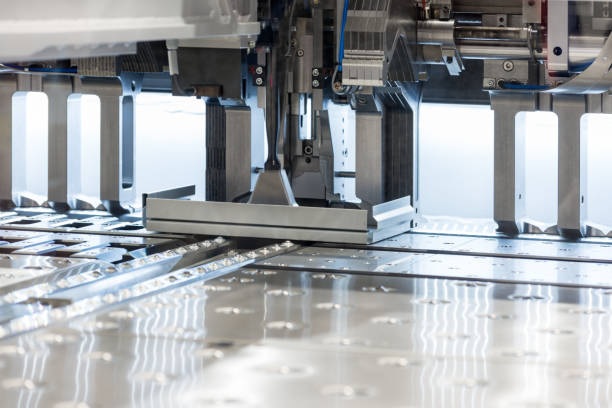Commercial buildings today stretch across many floors and host hundreds of lights. Managing them by hand wastes time and energy. That’s why many building owners and facility managers now turn to remote control lighting to handle things better. With this system, they flick a switch from a distance or tap a control panel to light up rooms, halls, or entire floors. In places like Singapore, a smart switch Singapore setup changes how offices and malls manage light and power.
This shift brings more than just ease. It saves power, boosts safety, and cuts costs. When paired with modern security technology solutions, such lighting also fits well into a wider plan to protect the premises.
Lower Energy Bills Through Smart Timing
Lights left on overnight or in empty rooms burn cash. Remote lighting gives control back to building managers. With a single command, they can dim or switch off lights in unused areas. Some systems even follow a daily schedule, turning on only when people need light.
For large buildings, this cuts waste sharply. Long corridors, store rooms, or meeting halls no longer glow for no reason. Smart settings keep lights off until movement is sensed or someone gives the order. Over time, this brings down energy bills, especially when added to wider energy-saving goals.
Easy Control from Anywhere
The biggest strength of remote control lighting in commercial buildings lies in its reach. Whether someone sits in the control room or checks in from a mobile device, they can handle all lighting tasks quickly. Need to shut off all lights after closing hours? One tap does it.
This also helps in case of sudden changes. A room set for a late meeting might need lights turned on past working hours. With remote access, there’s no need to send someone to the switchboard. The job gets done instantly, even from far away.
Safety Boosts with Better Visibility
Poor lighting makes it harder to spot risks. That’s a serious problem for security guards, night staff, and visitors. A well-lit space keeps people safe and alert. Remote control lighting can brighten dark corners or outdoor paths when needed.
This also supports safety tools like license plate recognition cameras. These cameras need enough light to read plates clearly. With remote lighting, staff can increase brightness near gates or driveways, helping the cameras do their job better. This adds another layer to a building’s security technology solutions.
Fewer Staff Needed for Lighting Tasks
Without remote lighting, buildings must rely on staff to walk around flipping switches. That takes time and adds to labour costs. With a central control system, one person can manage lighting across an entire complex.
This means less time spent checking lights and more focus on work that adds value. Also, fewer trips mean lower wear on stairwells and lifts, saving upkeep costs. This shift in control makes operations smoother without hiring extra hands.
Longer Lifespan for Bulbs and Fixtures
When lights stay on too long, they wear out fast. That means frequent replacements and extra costs. Remote lighting solves this. It helps reduce the time lights stay on, which in turn protects the fixtures.
Over months and years, this reduces the number of bulbs you throw away. This cuts down on waste and keeps your lighting setup in better shape. It’s also better for the environment, since you don’t toss out as many old bulbs or fittings.
Helps Meet Green Building Goals
Many countries, including Singapore, now push for green building certifications. These need buildings to use less power and make smarter choices. A smart switch Singapore setup supports this aim.
Remote lighting helps show your building uses energy wisely. It also shows your team uses modern systems to meet today’s climate needs. If you want a better rating for your commercial space, upgrading your lighting system gives a strong push in the right direction.
Custom Lighting for Each Space
Not every room needs the same lighting. A quiet lounge needs softer light than a workroom or hallway. Remote lighting lets you tune each light to match the mood or task. You can create calm zones, work-ready desks, or bright stairwells – all with a few settings.
This level of control helps boost comfort and focus for people inside the building. Workers feel better when lights suit the task. Visitors also feel more welcome in well-lit places. That good impression matters for stores, offices, and public venues.
Fast Response During Emergencies
Power cuts or fire alarms need quick action. With remote control lighting, staff can guide people to exits or light up escape paths. This happens without delay, giving everyone a safer route out.
This works well with other security technology solutions. For example, lights can flash near a door that unlocks during an alert. This gives people visual signs as they move to safety. Every second counts in emergencies, and quick lighting shifts help save lives.
Stronger Control Over Shared Spaces
Commercial buildings often house many tenants. Each group might rent a floor or office. With remote lighting, landlords can give them lighting control for just their space.
This helps tenants manage their own energy use while the main control centre still watches over the whole building. It avoids disputes about power bills and makes each unit more accountable. It’s also easy to bill each unit based on their use, giving more fairness to all.
Better Night-Time Security
Darkness makes it easy for intruders to slip through. Remote lighting keeps grounds and car parks well-lit when needed. It helps guards patrol with a clear view and helps license plate recognition cameras spot entries and exits.
When paired with other tools, the lighting acts as both a warning and a way to record events clearly. This makes it harder for crime to happen without being seen. That’s why remote lights are often part of strong security technology solutions in busy cities.
Less Downtime, More Control
Lights fail, fuses blow, and rooms go dark. But with remote lighting, faults get spotted fast. The system often shows which room or floor has a problem, helping workers act quickly.
This reduces the time spent searching for broken parts. It also means less disruption for people using the space. Work continues, customers stay happy, and the building image stays strong.
Conclusion
Remote control lighting in commercial buildings isn’t just a trend – it’s a solid move towards safety, savings, and smarter work. With a smart switch Singapore system, teams gain full control over how, when, and where lights shine. It fits well with other upgrades, like license plate recognition cameras and full security technology solutions, making it part of a larger plan for smart buildings.
As cities grow and buildings stretch taller, simple things like lighting need clever handling. Remote systems step in to cut waste, boost comfort, and keep places safe. For commercial spaces in Singapore and beyond, that’s a light worth switching on.






